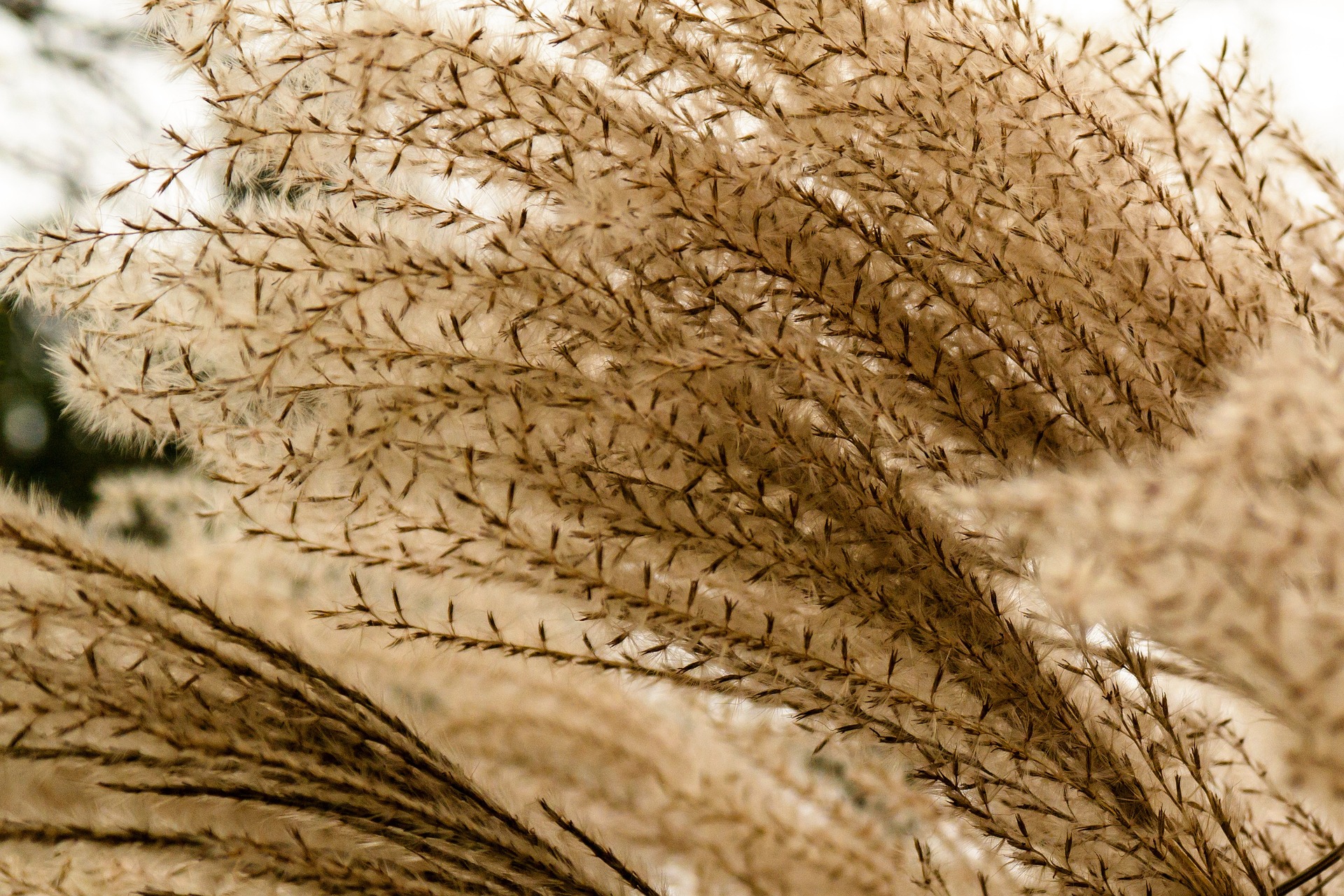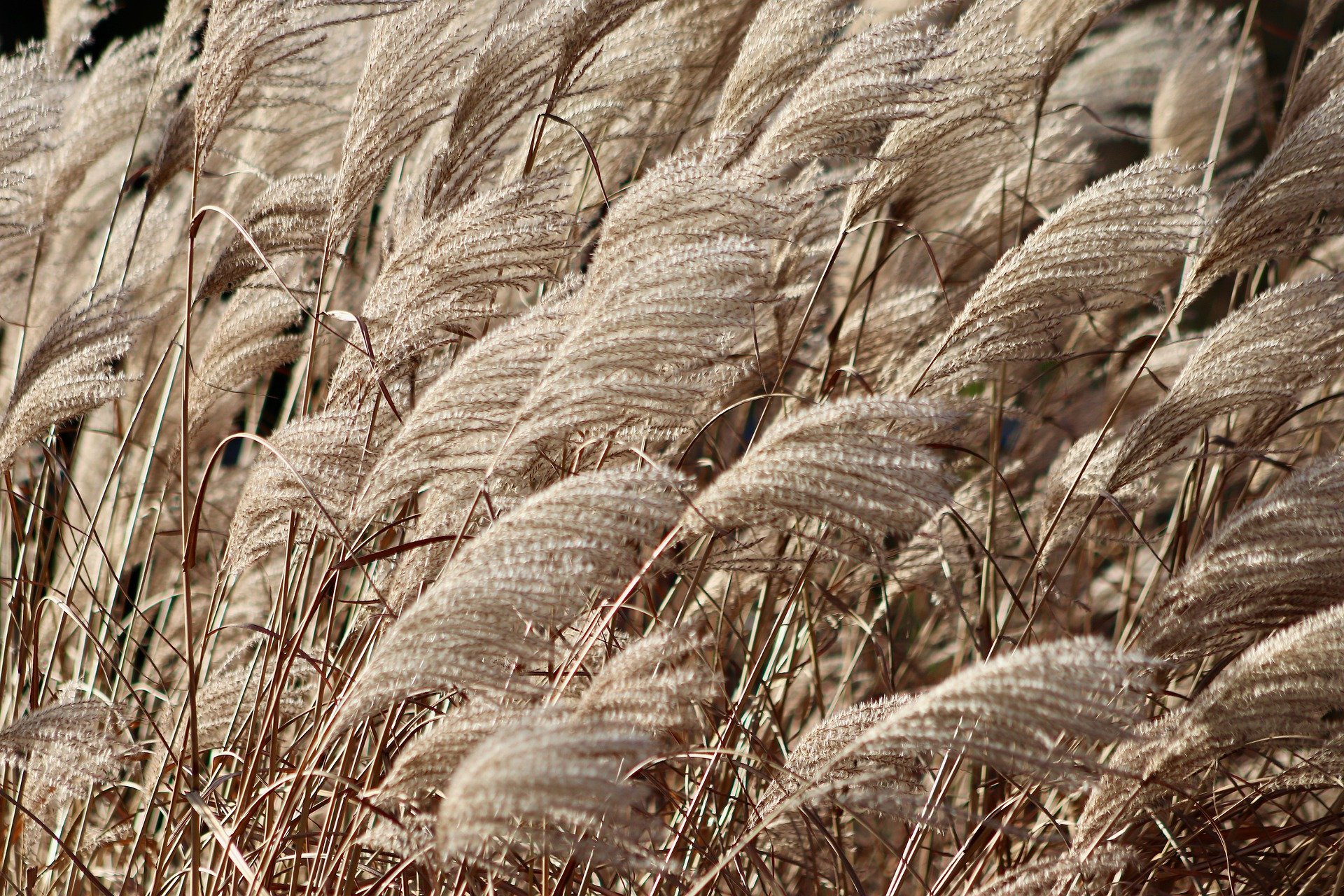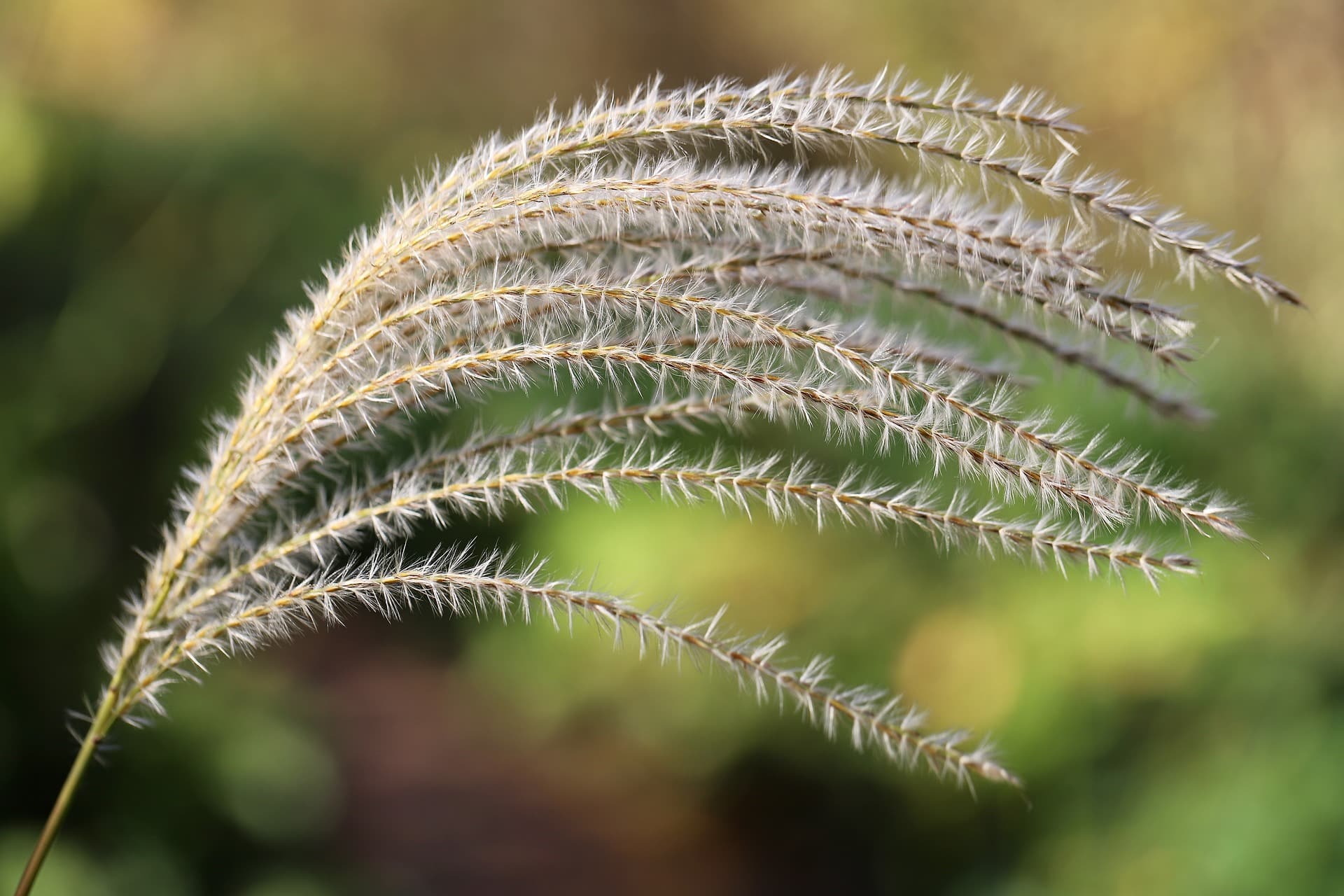
Miscanthus sinensis It is a very resistant grass and was formerly considered a weed but that today is used as an ornamental plant.
Miscanthus sinensis is the most common variant of the grand Miscanthus family. It is a perennial herb of tropical and subtropical origin, which It is widespread in Africa and the Oriente.
Although today it is used as an ornamental plant, we must not lose sight of the fact that it is a weed because it grows excessively, especially in degraded areas that are on the outskirts of cities. As is the case of China or Africa.
And why has a weed become an ornamental plant? For its beauty and elegance, which have made it a prized plant. So much so that today it is considered among the frost resistant garden plants and even one of the ornamental plants more particular to have them even in pots. Like any weed, it has the property of reproducing quickly and being resistant even in poor soils and unfavorable situations.
How do you classify Miscanthus sinensis?
It is commonly known as Miscanthus, Eulalia or Chinese silver grass, in botany it is a flowering plant of the grass family poaceae.
Where does the name come from Miscanthus (Miscanthus)
The botanical name derives from the Latin Miscanthus which has its origin in the Greek word miskos, that is, 'stem', and anthos What does 'flower' mean? in reference to the pedunculated spikelets that distinguish it.
The term sinensis indicates the origin Chinese although the plant is also found in Japan, Korea, Taiwan and even in Africa.
Species of most common miscanthus
The entire botanical family of Miscanthus includes about twenty different species, all of them extraordinary and beautiful.
The most widespread is undoubtedly this variety that we are talking about today, from which a series of hybrid plants with partially different characteristics are generated. Today there are about 200 varieties of hybrids that have been given from the species sinensis.
How is this plant?

The plant can reach 150 cm high and 150 wide. It has a unique characteristic that is a pale yellow panicle inflorescence. This gives it a look of Cortaderia Selloana or pampas grass. Originally from China, it is widespread in Japan, Korea and Taiwan. The root of this plant is a very strong rhizome. The stem reaches up to 2 meters in height, it is an erect stem that has feathery inflorescences at the end.
Its leaves are bluish-green in color, thin with silvery veins, and flutter in the wind making a slight sound that makes them unique.
All the flowers they are gathered in panicles or spikes composed of many small silvery-white or orange-yellow flowers that last on the plant for months.
Characteristics of the different varieties of Miscanthus
Here are some characteristics of the different varieties of plants:
- Miscanthus sinensis gracillimus. This species reaches a height of about 50-60 cm and is an ornamental plant with very pretty sage green leaves. It adapts well to any terrain and is resistant to cold and even drought. Blooms in fall and throughout winter. It is perfect for gardens, especially in winter.
- Miscanthus sinensis sacchariflorus. This can reach 2 m in height and grows even in arid soils. But it is not capable of living on stagnant water. In September it grows purple flowers that in winter turn silver. It is typical of gardens, also in winter, but it must be located in a sunny place.
- Miscanthus sinensis variegatus. It grows up to 1,5 m tall and has a diameter of about 50 cm. Its leaves are green with yellow veins and it is usually put in pots as a decorative plant. Pink flowers appear towards the autumn that clear with time.
- Miscanthus sinensis zebrinus. More than 1 m tall and up to 60 cm wide, it has arching leaves veined with golden yellow. It resists in dry soils and its flowering, which begins between August and September, remains without falling until the cold winter.
- Miscanthus sinensis purpurascens. It is a very resistant rustic plant. This variant is characterized by its purple flowers that are accentuated when night temperatures become more rigid.
- Miscanthus sinensis 'Morning light'.This is the smallest variant. It is a pot hybrid because it does not grow too large. Its leaves are streaked with white and turn silver when blown by the wind.
- Miscanthus sinensis strictus. It has thick tufts with green foliage streaked with golden yellow from the soft tufted inflorescence. Winter hardy, it can be grown both in the ground and in pots outdoors.
- Miscanthus sinensis giganteus. It has the particularity of being particularly large, in fact it reaches 3 m in height. It is also widespread in very cold countries in northern China and Siberia. It holds up very well all winter. Its decorative value is highly appreciated for its resistance to cold, in fact it manages to remain beautiful and full of inflorescences even in places with a harsh climate. It has the ability to absorb carbon dioxide in large quantities. In addition, it is intended for the production of biomass. It is used as fuel for heating because it has a high yield: 1 hectare cultivated with gigantic It can generate between 20 and 25 tons of dry matter for combustion.

Miscanthus sinensis cultivation
As we have mentioned, it is a plant that is resistant to both cold and drought or arid soils. Being a weed, it is easy to grow, especially if these simple tips are followed:
- Growing in pots. Although it is a weed it can be grown in pots. For this, the ad hoc variety should be selected, since it does not need much space to spread.
- Cultivation in full land. We can also grow it in the home garden. With an extension of more than one meter on average both in height and width, it can act as hedge windbreak or as a dividing plant to increase the privacy of a private garden. Its ornamental value is offered by its long and resistant flowering.
- temperature and location. It can tolerate winter temperatures. In fact, some species are capable of resisting down to -20°, such as the Gigantic. Other species resist the cold, but not the frost and that is why they must be kept sheltered and use a good mulch. They should be kept in sun or partial shade.
- Land. The soil that best suits them should be fertile, peaty and slightly humid. Preferably soils rich in organic matter and above all that are well drained.
- Fertilization. When spring arrives it is advisable to add a ternary complex fertilizer rich in nitrogen (N), potassium (K) and phosphorus (P) or granulated manure, which can help the growth of the young plant.
- Flowering. Part of the beauty of this plant lies precisely in its flowering, which is long and resistant. Its flowering varies in relation to the cultivated species but on average it flowers between August and the end of October.
- Pruning. Let's remember that it is a weed, therefore, it can become invasive if it is not taken care of. It is best to do mowing actions at the end of each winter. Pruning should be done with proper tools and wearing gardening gloves because the leaves could break.

When and how much to water the Miscanthus sinensis plant
It is resistant to drought. Like other grasses, it only needs to be watered with rainwater. The problem is that with climate change there is less and less rain, so it is better to water it from time to time if it does not rain. But if we go too far we will drown it, we must see that the earth is minimally humid. That's enough.
How to replicate Miscanthus siniensis
It is an invasive weed, so it multiplies naturally in an infesting way, so you have to be careful that it does not invade other plants in the garden. Even so, if you want to plant it you can use:
- Seeds. The sowing of the plant is carried out between March and April. When the seedling sprouts, after about 2 weeks, it can be placed in a pot, keeping it away from excessive cold and frost. The following year, the seedling will be strong enough to be placed permanently in the ground.
- By division. In spring or autumn, the seedling takes root in a pot and is planted after a year.
How we can combine Miscanthus sinensis with other plants in the garden
The leaves of the plant are blown by the wind and produce a soft sound while the silvery inflorescences seem to catch the light even in winter. That makes them beautiful in the garden, and they are easily combined with plants such as bamboo, rosehip, rudbeckia, Heliopsis helianthoides, sedum, Achillea rubus, Icylindrical mperata 'Red Baron'…
What affects you?
It is a rustic plant and resists well the attack of parasites such as aphids and mealybugs. However, there are fungal diseases that can kill it like plant rust, which occurs with brown spots on the leaves. O well the root rots because of the stagnant water on the ground.
Curiosities about Miscanthus
There are certain curiosities that you should know about this plant, such as now that it is used to purify the soil of heavy metals and other harmful substances. It is used as mulch in agriculture and as bedding by sheep breeders. The giganteus species is cultivated to produce biomass that will be used to heat in an ecological way.
Is it a toxic plant?
It is not toxic to humans or animals.